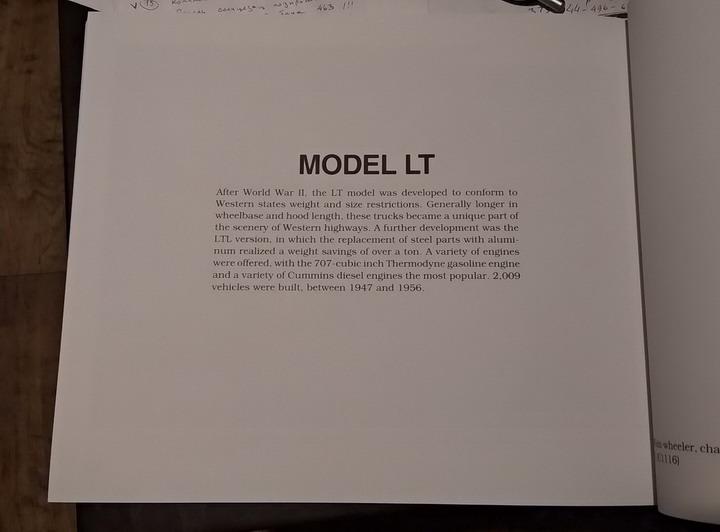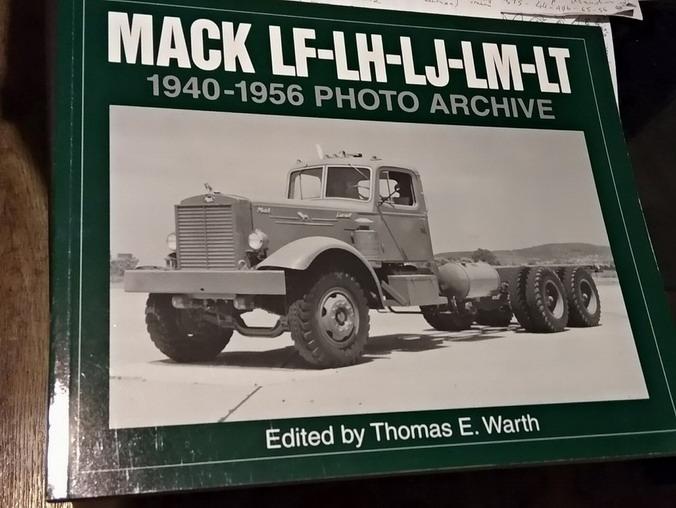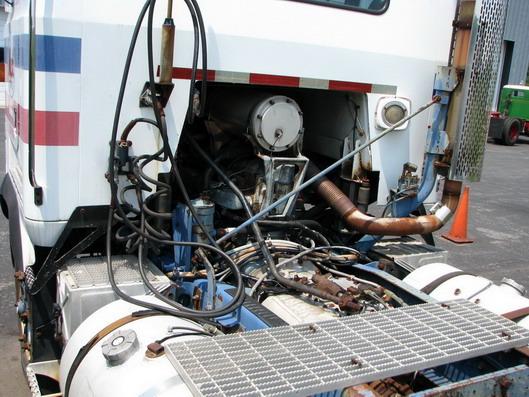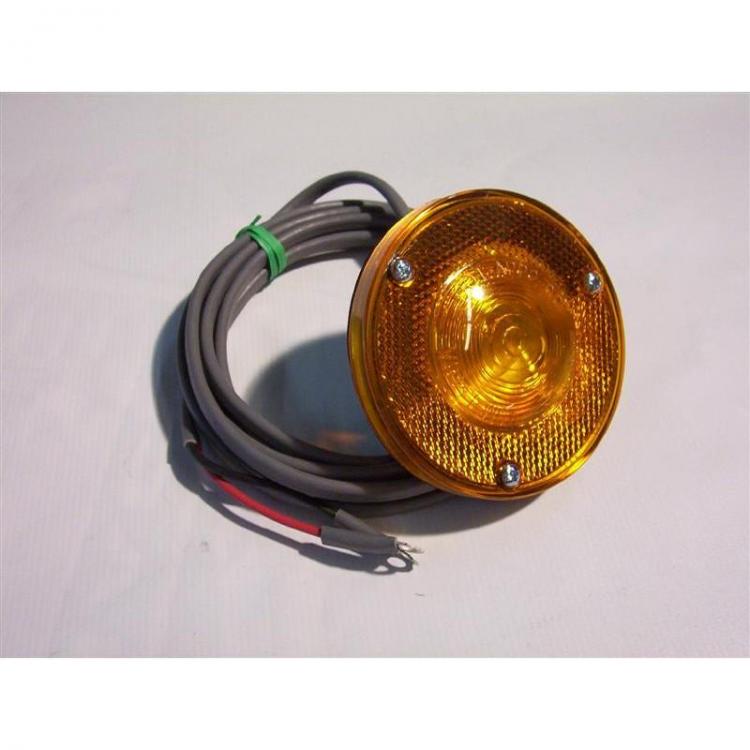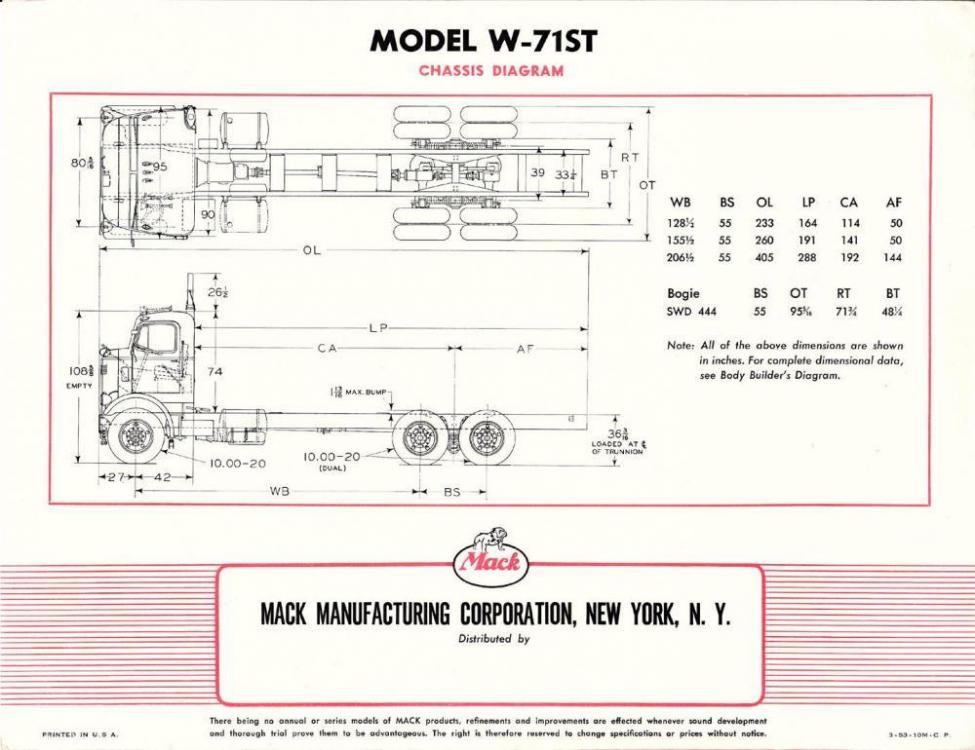-
Posts
7,929 -
Joined
-
Last visited
-
Days Won
78
Content Type
Profiles
Forums
Gallery
Events
Blogs
BMT Wiki
Collections
Store
Everything posted by Vladislav
-
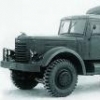
Salt Lake City W-71
Vladislav replied to CaptainCrutch's topic in Antique and Classic Mack Trucks General Discussion
My bet that's EY 707ci Mack engine taking to account the production year. -
That was a good idea. I even spinned a couple of serious thoughts in my mind.
-

The 8Th DM800 in the world
Vladislav replied to Guy Edelist's topic in Antique and Classic Mack Trucks General Discussion
Just don't cut it off the frame rail and put up for sale on flea-bay -

R Model Fender Light?
Vladislav replied to h67st's topic in Antique and Classic Mack Trucks General Discussion
If you look at the pic of the light in the very beginning of the thread it doesn't have any reflection area. And that part was mentioned as a R-model light. The one I posted with reflector is for R-model also. These are common ones for all late R's, RB,s DM,s etc. And those trucks didn't utilize the additional reflector. The pic of the early R has it what might mean it was needed to be installed. If the light with no reflector was used on R-models originally that could be the reason to install a separate reflector nearby. Than later Mack or vendor improved the light adding reflection area and the separate part became useless. This is my suggestion, I don't have a track to original source of info. -

R Model Fender Light?
Vladislav replied to h67st's topic in Antique and Classic Mack Trucks General Discussion
Doesn't it look strange with reflector put right near the turn light which already has reflector integrated? Seems typical for early R's having those additional reflectors. And by this way it seems to me there was a matter for that. -

B-73 Restoration
Vladislav replied to mattb73lt's topic in Antique and Classic Mack Trucks General Discussion
Seems like now you can take some of your breath away. A bit of filling and sending and it's ready to obtain a colorful look -

Salt Lake City W-71
Vladislav replied to CaptainCrutch's topic in Antique and Classic Mack Trucks General Discussion
Mack introduced their first own diesel together with other Thermodyne engines - 519 c.i. ED Lanova in November of 1938. Interesting fact they offered gasser in 3 displacements of 510, 673 and 707 but the only Diesel was in the smallest block. In fact those gassers and the diesel were very similar in design having the most of the block as the same casting, same crankshaft, oil pan etc. But seemed Mack tried to go a safer track with diesel offering it of relatively low HP and with thicker cylinder walls. In fact the next generation was END-672 which also used Lanova combustion chamber but was made in 673 c.i. block. Not ready to say the year of beginning of the production, probably 1945 or 46. The fact of LT with Mack gasser existance seems as one really interesting matter no doubt. Might worth bothering Mack museum if no other facts show up. -

Salt Lake City W-71
Vladislav replied to CaptainCrutch's topic in Antique and Classic Mack Trucks General Discussion
The only source of info on LT with Mack engines is a text in a green Mack book which covers L-model history. Although it mentioned in the text the book conteins none of the LT pics representing Mack engine installed. Also there's sence indeed of no need of long LT bonnet for installing Mack engine as long as LF/LH?LJ could be used for such reason. So probably only a case might be if someone wanted LT (or aluminium LTL?) chassis or just the look. Another point I didn't understand your phrase of Mack not making their own engine until late in LT production. We know Mack made as early engines as for AC Bulldog and earlier but particulary Mack introduced Thermodyne OHV serie of engines in November of 1938 including EY which was 707. -

Factory Ultraliner Specs?
Vladislav replied to CaptainCrutch's topic in Antique and Classic Mack Trucks General Discussion
The truck in the Museum (the last pic in your post) has E6-350 4V Mack engine and the most probably T2090 9-speed Mack tranny. It could also be T2100 10-speed as they utilized the same housing but 9-speed seemed as a more common unit. But if you look at the pic you took in the junk yard you can see the airfilter housing is different. I'm not ready to state that's just another style of the canister on the same type engine (I doubt) or the truck was equipped with Mack E9. -
I had to investigate that matter some years back since had no knowledge about truck wheels at all. So.. Everything earlier nearly 1990 were the style with two nuts as you pointed out. The wheels had 10 holes and each hole had recess or a cavit to accomodate the nut cone. Those were made on both sides of the wheel to be possible using it both on fronts or rears. Having that cone attachment the wheel gets proper seat over the studs being set by the cones so that type was correctly called as a stood piloted wheel. I also saw sources where it was called "ball seat". Some numbers. Stud hole ID 1,219" (31mm), hub bore 8.37" (221.7mm) About 1990 or a bit later wheel attachment got improvement. Starting from that point wheel seats tighter on the hub and centers over it. So this style is called a hub piloted wheel.The studs got different OD and the thread step and the holes in the wheel were made less of the size. When you put the wheel on the hub you fit it with nuts which are flat where they get against the wheel. The wheel is flat over the stud holes too. At rear you put both wheels on the studs and than put only one nut on every stud and tight up. Probably you tight the nut harder than if use stud piloted style but I didn't learn that matter. Those wheels were bored for 220.1mm at the hub hole (a bit tighter than stud piloted style as you can see) and the stud holes are 26.75mm. Also I learned that you can determine the wheel style from Alcoa part#. For example stud piloted 8.25x24.5 wheel is 983100. Or 983101 if polished outside, 983102 inside, 983103 both sides. But the same size hub piloted wheel is 983600 (601,602,603)
-
Those hydraulic systems use to be leaky due to the age. Could be needing to add some fluid into the filling plug in the pump housing. Whan you put the control lever into the position as described above and start pumping the cab locks get off first under the cab airbags and than lifting cylinders start pushing the cab upwards.
-
The LT fenders are an almost different story. The L firetruck ones (like those on your truck) aren't only beefy over the wheel arch but get longer to the rear where they match the running boards. There's a side cowl panel between the hood side and the cab's door if you look at L-model from the side. The fender cuts it at the front lower corner getting over that area. Firetruck fender gets more over the cab cowl than a commercial L-model fender does. When I was offered to buy a set of firetruck fenders (West Coast and expensive) I looked over the possibility to rebuild them into the commercial style. Found out they're longer to the back and wouldn't fit my running boards which I would need to redo shortening the front ends. Another important point I found out the hood side panes are different either since firetruck fender gets higher in the area (the line) where it touches the hood side. And if you take to account the inner fender half mounts to the frame rail and does it horizontally but gets higher where it corresponds with the hood side panel it means all the inner part of the firetruck fender is of different shape than a commercial L one. Following that the outer part of the fender being unified with the inner one gets higher either and as long as it has constant radius it gets higher over the panel between the hood side and the door ending up longer rearwards where it levels with the running board. So just looks beefy but in fact an almost different shape. Telling more there were early L-model firetrucks which had front fenders drop shaped. They looked close to E-model fenders.Nice style but you definitely wouldn't correspond them with later running boards and too probably the engine hood sides either.
-
L-model firetruck fenders are different in relation to a common L. Worth to note they firetruck ones were of two different styles either (and I don't mean Left and Right) but neither of them woulf fit correct on LF or LJ.
-

Mack RL question
Vladislav replied to Ditchdiggerjcf's topic in Antique and Classic Mack Trucks General Discussion
He meant IF Western R had those rear mounts ORIGINALLY put backwards and now installed as on the T2090 pic... -

R Model Fender Light?
Vladislav replied to h67st's topic in Antique and Classic Mack Trucks General Discussion
I'm not a top notch expert (no matter someone sertified me of know-it-all) but I never saw such turn light on an R-model. I have two R's and DMM and payed attention to the most every R-model I could ever see and I saw them no less than a hundred. All the side fender lights on R's, DM's, DMM's etc were of quite similar style but slightly different. My suggestion that the part showed above was used on early series R's and the most were gone now or swapped with newer version which as I mentioned is very similar. http://www.wattstruckcenter.com/store/index.php?route=product/product&path=60_78&product_id=187 -

Salt Lake City W-71
Vladislav replied to CaptainCrutch's topic in Antique and Classic Mack Trucks General Discussion
Whoops!.. Many thanks for the reference picture. For some reason I thought LT rails were of the same shape as a common L-model had with just cab mounts etc moved backwards. Now I clearly see I was wrong. Probably I never crawled under an LT chassis since it's off a focus of my interest. One of the greatest looking trucks no doubt but my personal preference is an all Mack drivetrain. LT's with 707 were described as produced in some quantities but I don't remember ever hearing of any survivors. -

Salt Lake City W-71
Vladislav replied to CaptainCrutch's topic in Antique and Classic Mack Trucks General Discussion
-

Salt Lake City W-71
Vladislav replied to CaptainCrutch's topic in Antique and Classic Mack Trucks General Discussion
I saw on some factory chassis schemas that W frame rails had spread to the front like say B-model did. At the same time I'm sure LT rails were straight front to rear if you look at them from the top. Any ideas on the matter? Just a wrong picture? -

1965 Mack B-75
Vladislav replied to j hancock's topic in Antique and Classic Mack Trucks General Discussion
I think I had a pic of that blue L-model to the left of the B and it was represented at the same place freshly restored. So seems like this shot was made a while back. Very nice truck anyway. Jim, just wanted to let you know that your recently posted pics look like they had color balance corrected and look unnatural on my screen. Or is that a special kind of digital photo film?? -
Very strange issue and doesn't seen as a diff issue. I would try to control operation of brakes on the left wheels when such effect happens.
-
I would be too likely to know where those fenders went. Would like to purchase the whole thing too but at the moment it's definitely not the time for one more serious project.
-

GM scraps historic Holden car brand in Australia
Vladislav replied to kscarbel2's topic in Odds and Ends
That's one of the matters of the global economy. -

B-73 Restoration
Vladislav replied to mattb73lt's topic in Antique and Classic Mack Trucks General Discussion
That's not enough to say drool looking at these pictures. More close to the content of animated pic Hatcity used to post sometimes in the past. A long while back Mike Siuperdog put brand new L-model door up for sale on here. I don't remember which side and sure don't have an idea on he sold it or not.
BigMackTrucks.com
BigMackTrucks.com is a support forum for antique, classic and modern Mack Trucks! The forum is owned and maintained by Watt's Truck Center, Inc. an independent, full service Mack dealer. The forums are not affiliated with Mack Trucks, Inc.
Our Vendors and Advertisers
Thank you for your support!




